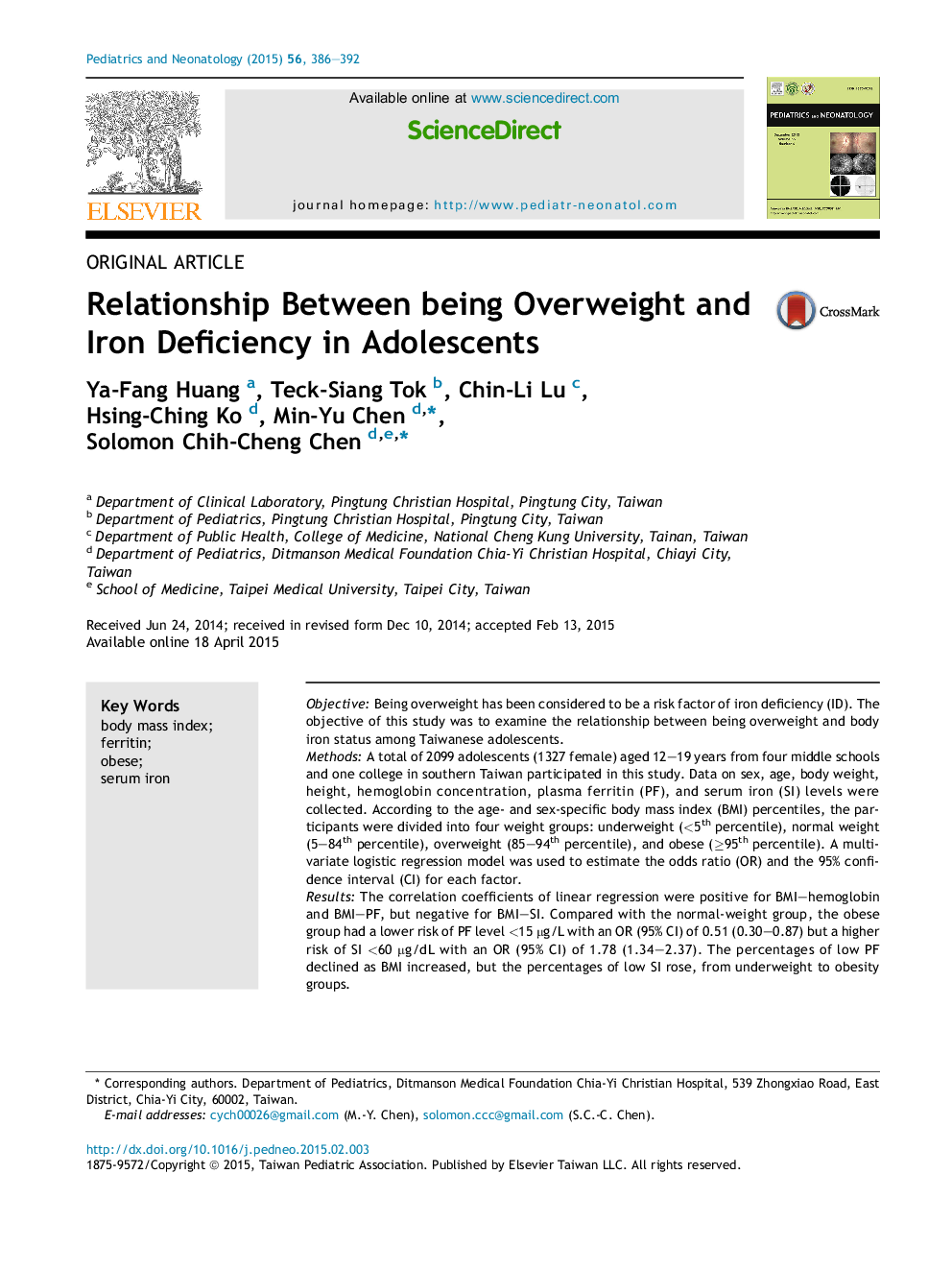| Article ID | Journal | Published Year | Pages | File Type |
|---|---|---|---|---|
| 4174939 | Pediatrics & Neonatology | 2015 | 7 Pages |
ObjectiveBeing overweight has been considered to be a risk factor of iron deficiency (ID). The objective of this study was to examine the relationship between being overweight and body iron status among Taiwanese adolescents.MethodsA total of 2099 adolescents (1327 female) aged 12–19 years from four middle schools and one college in southern Taiwan participated in this study. Data on sex, age, body weight, height, hemoglobin concentration, plasma ferritin (PF), and serum iron (SI) levels were collected. According to the age- and sex-specific body mass index (BMI) percentiles, the participants were divided into four weight groups: underweight (<5th percentile), normal weight (5–84th percentile), overweight (85–94th percentile), and obese (≥95th percentile). A multivariate logistic regression model was used to estimate the odds ratio (OR) and the 95% confidence interval (CI) for each factor.ResultsThe correlation coefficients of linear regression were positive for BMI–hemoglobin and BMI–PF, but negative for BMI–SI. Compared with the normal-weight group, the obese group had a lower risk of PF level <15 μg/L with an OR (95% CI) of 0.51 (0.30–0.87) but a higher risk of SI <60 μg/dL with an OR (95% CI) of 1.78 (1.34–2.37). The percentages of low PF declined as BMI increased, but the percentages of low SI rose, from underweight to obesity groups.ConclusionThe relationship between being overweight and depleted iron store depends on which indicator is used to define the iron deficiency. Being overweight or obese would not be a risk factor of ID in adolescents, if ID were defined by PF rather than SI level.
